So you want to put a pool in your backyard but don’t know how much it’ll cost?
In this article, we’ll explain all the factors that affect an inground pool cost, which ones you can manage, and how to save big.
How Much Does an Inground Pool Cost?
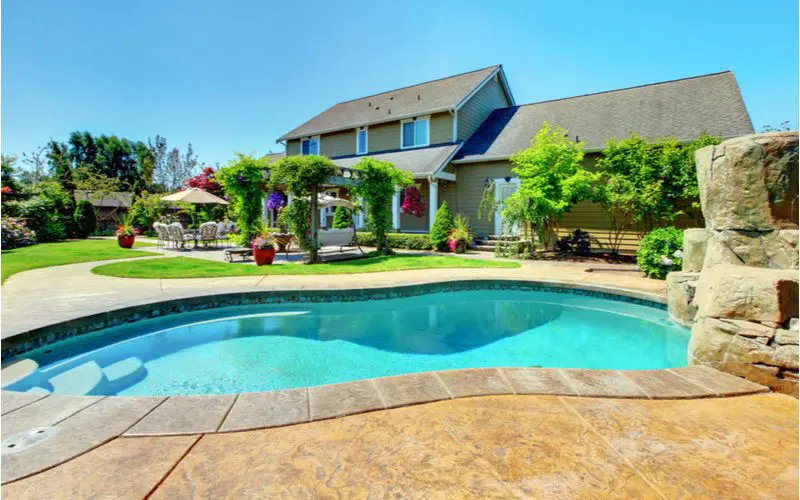
Artazum/Shutterstock
According to Forbes, the average cost to install an inground pool is $35,000.
Expect to pay between $50 and $125 per square foot, with costs increasing as features are added. Pricing factors fall into a few distinct categories:
- Excavation costs
- Size and shape of the pool
- Material/Equipment costs
- Maintenance costs
Factors Affecting Inground Pool Costs
While the average above is good for getting a rough estimate, in reality, inground pool costs vary significantly based on four major factors: excavation costs, size of the pool, materials and equipment, and maintenance costs.
Understanding these categories will help you get a ballpark estimate for installing your own pool.
1. Excavation Costs
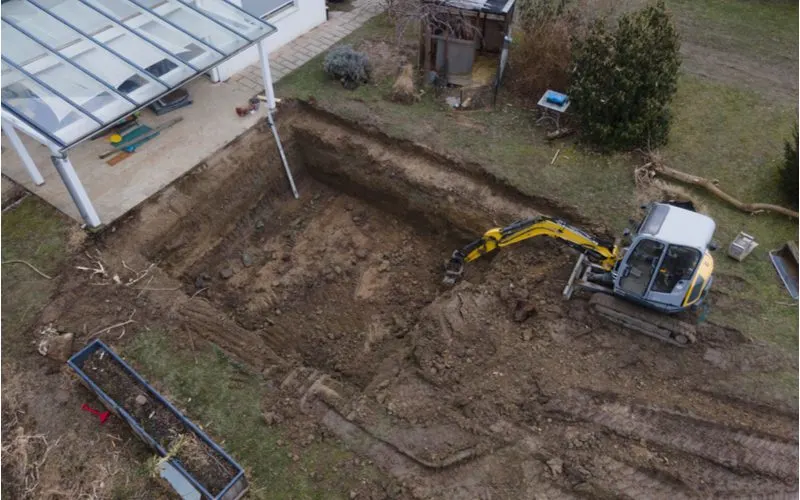
Epixproductions/Shutterstock
Excavation is the process of digging a hole for your inground pool. Many things can contribute to higher excavation costs, like permits from your neighborhood or incredibly rocky terrain.
The average price ranges from $1,438 to $5,295, with an average of $3,274.
However, you’ll also have to consider the cost of labor. Depending on the company you hire, you may have to pay the workers hourly, which can be as expensive as $150 per hour.
Pool excavation companies may also price a job by cubic yards of dirt. The average cost per cubic yard is about $100, but it can be as high as $200 if the terrain is poor. You’ll also have to calculate additional costs for leveling, clearing, and grading.
2. Size and Shape of the Pool
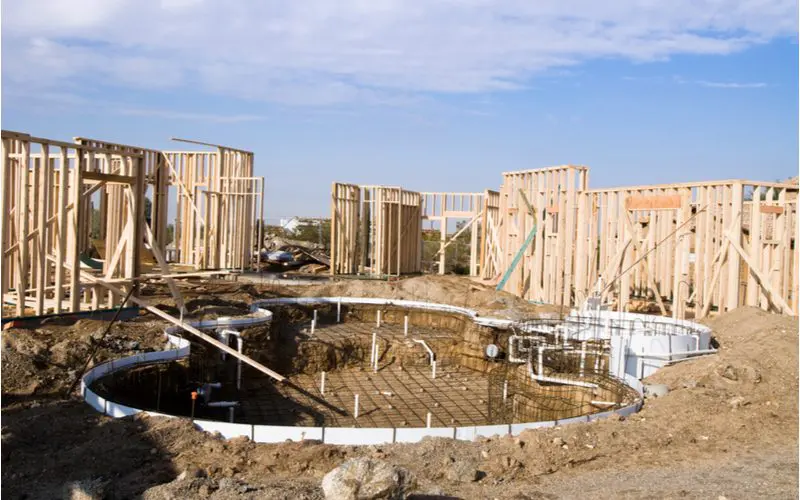
Joe Belanger/Shutterstock
Once you understand the cost of excavation, the next step is determining the size of your pool. You’ll want to do this based on the size of your backyard and how big of a pool you want.
Regardless of how big your backyard is, you’ll want to build your pool on level ground to keep costs low. If you have a really big yard but only a small portion of it is level, you might be better off choosing a smaller pool shape and size that fits that area.
The average size of a large pool is about 18 by 36 feet. Pools this size will usually have deep ends that are 9 to 12 feet deep. To build a pool this size, you’ll need a space that is at least 1.5 times as big as the pool area to ensure you have adequate space for other activities.
Large (18 x 36 ft) pools are great for families of at least 6 to 8 people who will use the pool regularly. You can opt for a shallower design if you have small children. If you have a smaller family, you can opt for a plunge or a cocktail pool. These pools are around 10 by 20 feet and 5.5 to 7 feet deep.
When it comes to shape, most pools are rectangular, but this shape doesn’t accommodate all yards. If your yard is in an unusual shape, then you can opt for an oval or circular pool. A hexagonal design is also an option. Just be aware that complex shapes are more expensive to build.
3. Materials and Equipment
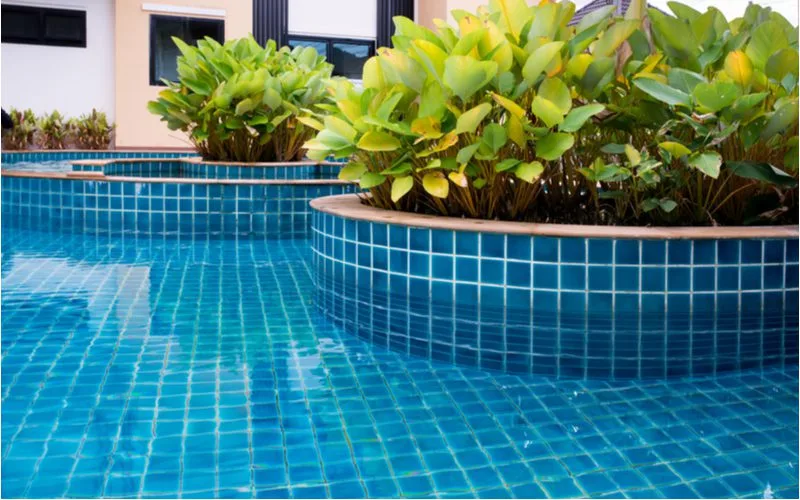
Surak Chaipayoun/Shutterstock
After you have a giant hole in your backyard, you’ll have to decide what to line it with.
The most popular materials for lining an inground swimming pool are vinyl, concrete, and fiberglass. Each of these materials has its strengths and weaknesses.
Concrete
Concrete pools (A.K.A. gunite or shotcrete pools) are the most popular because of their flexible installation and durability. Builders make them by spewing wet concrete onto metal beams placed along the edges of the pool hole.
These are the most expensive types of pools. The most significant benefit of concrete pools is their versatility. The concrete is easily applied to any type of hole and can form any pool shape.
They typically take 12 weeks to install, which is longer than other types. However, they’re the only type of pool that can be rebuilt and enlarged. The average cost of a concrete pool is $40,000.
Vinyl
Vinyl is one of the cheaper materials to line a swimming pool. It requires a contractor to design a one-piece vinyl liner to your pool’s specifications and attach it along the edges to metal supports.
The problem with this pool type is that the liner can rip. If you decide to go with a vinyl liner, choose one that is at least 20 mm thick. They take about one to three weeks to install. The average cost for vinyl pool lining is $25,000
Fiberglass
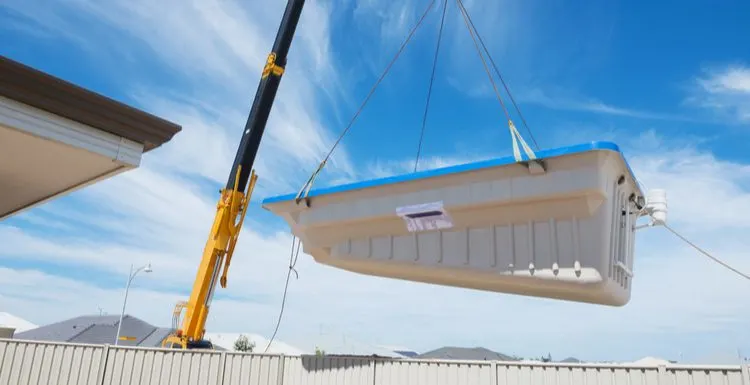
Lev Kropotov/Shutterstock
Finally, fiberglass pools are the fastest pool type to install. They can be ready for water in only three days. The installation involves a giant molded fiberglass shell being lowered into the excavated hole by a crane.
That is why the sizes and shapes of this material are not diverse. Fiberglass pools require fewer chemicals than concrete pools, so they are more environmentally friendly. However, you must prepare your yard for the crane.
Make sure you have an easy way for the crane to get in and out. There can’t be any wires hanging overhead, or the crane won’t be able to pass. The average cost for fiberglass pools is $20,000
Equipment
The next most expensive part of installing a swimming pool is the equipment and additional accessories you buy for it.
The first thing you’ll need to consider is the pool’s filter. This will be the most expensive piece of equipment and will vary based on your pool’s size.
The average combined cost for a pool filter and installation can range from $500 to $2000.
After your filter is installed, you’ll have to consider other accessories. Maybe you’ll want a fence so no one goes pool-hopping in your backyard.
Or perhaps you’ll want a slide or a kid’s pool for extra fun. Want to have a patio around your pool for relaxing? This will be another cost you’ll have to calculate.
4. Maintenance
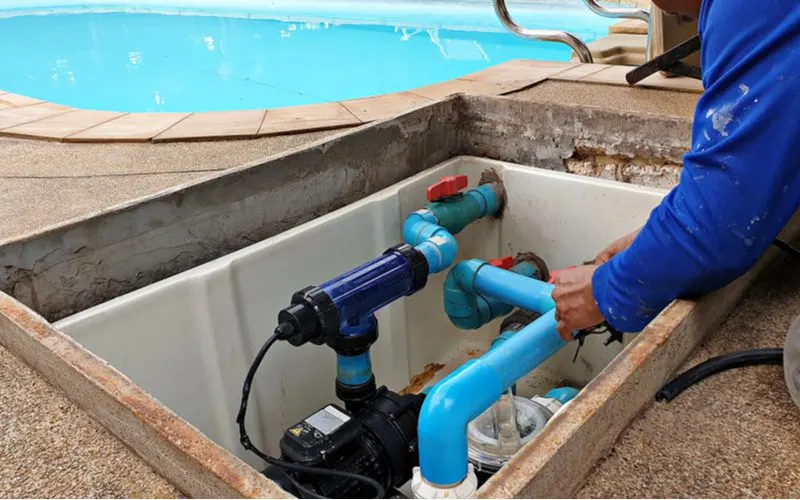
B Ledger/Shutterstock
The last thing you’ll need to consider when purchasing an inground pool is maintenance. Inground pools require attention year-round, and a poorly maintained pool will quickly become expensive to repair and relatively useless.
The annual cost of maintaining an inground swimming pool is between $3000 and $5000 per year. This fee includes cleaning, chemical treatments, minor repairs, electricity, and water.
Maintenance prices can also be cheaper, depending on the material your pool is made of. Maintenance can also be cheaper, depending on where you live. Hot states like Florida and California have lower pool maintenance costs than northern states.
Smaller pools can be much cheaper to maintain than large ones. The best way to save on these costs is by keeping your pool in good condition and doing some of the maintenance yourself.
Frequently Asked Questions
Now you should have a pretty good idea of how much an inground pool costs.
Let’s look at some of the most popular questions from potential pool owners.
Is an inground pool a better investment than an above-ground pool?
Inground pools are definitely a safer investment than above-ground. First of all, they require about the same maintenance, but inground pools last longer and are less likely to break.
They also have the potential to add value to your home whereas above-ground pools can reduce home value.
However, the one area where above-ground beats inground is dedication. You don’t need to be as committed to an above-ground pool because you can always just tear it down.
How much does it cost to build a fence and a patio around an inground pool?
No one wants to climb out of the water onto the mud. The odds are you want a patio or at least a layer of concrete around your pool so you have a clean place to dry off. The pool deck is no small cost.
The average cost for a deck or patio is $5,000, but it can range as high as $12,000 depending on the material and the design. For fences, you’ll have a smaller expense. It only costs about $1,100 to $1,900 to install most pool fences.
So, What Does an Inground Pool Cost?
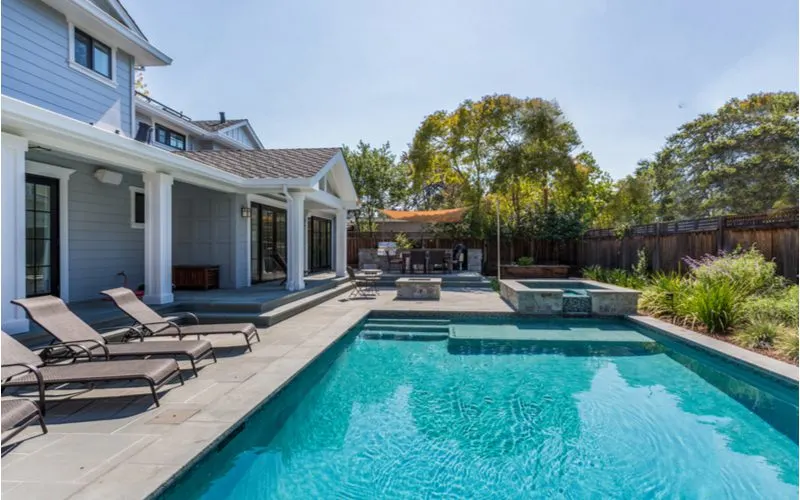
Krista Abel/Shutterstock
The average cost of your inground pool is about $35,000, or $50 to $125 per square foot.
However, as you can see from this article, costs can vary widely depending on the site, size of the pool, materials and equipment, and maintenance costs.
This is no small investment, and we recommend taking your time to make the decision carefully.
